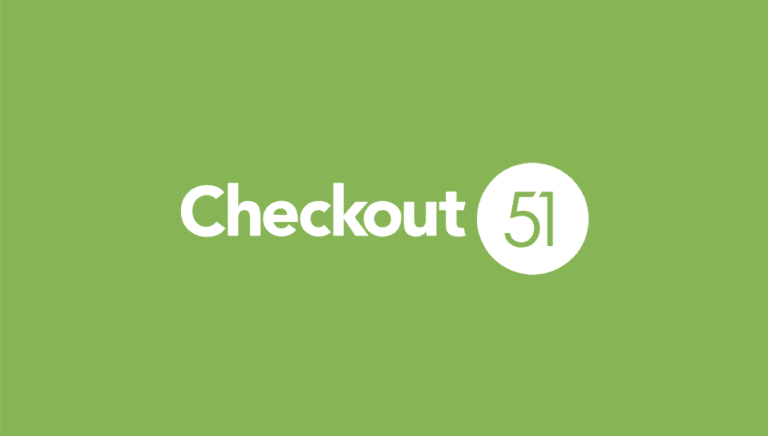
Best Grocery Budget Apps for Families in 2025
Managing a family grocery budget feels like solving a puzzle every week. Between rising food costs, kids’ changing preferences, and the constant battle between healthy choices and affordability, I’ve tried dozens of grocery budget apps to find the ones that actually work for real families.
After testing 25+ apps over the past year with my family of four, I’m sharing the top 10 that have genuinely saved us money, time, and stress. These aren’t just apps that look pretty—they’re tools that put real money back in your pocket.
How We Tested These Apps
Over 12 months, I tracked:
- Actual savings: Real money saved, not just claimed discounts
- Time investment: How much effort each app requires
- Family usability: Can busy moms actually use these consistently?
- Reliability: Do the offers actually work at checkout?
Our family stats: 2 adults, 2 kids (ages 8 and 12), $650 monthly grocery budget, shop primarily at Kroger, Target, and Walmart.
The Top 10 Best Grocery Budget Apps for Families
1. Ibotta ⭐ Best Overall
Why It’s #1: Consistently delivers the highest cashback returns with the least effort.
How It Works: Browse offers before shopping, buy qualifying products, scan receipts or link loyalty cards for automatic redemption.
Real Family Savings: $47/month average Time Investment: 10 minutes per shopping trip Minimum Payout: $20
Pros:
- Largest selection of grocery offers
- Works at virtually every major retailer
- Team bonuses increase earnings
- Automatic redemption at linked stores
Cons:
- Must activate offers before shopping
- Some offers require specific quantities
Best For: Families who shop at multiple stores and want consistent cashback without changing shopping habits.
Pro Tip: Join or create a team with friends/family. Team bonuses can add $5-10 extra per month.

2. Rakuten ⭐ Best for Online Grocery Orders
Why It Made the List: Unmatched for online grocery shopping and meal delivery services.
How It Works: Shop through Rakuten’s website or browser extension to earn cashback at thousands of retailers.
Real Family Savings: $23/month average Time Investment: 2 minutes per online order Minimum Payout: $5
Pros:
- Up to 10% cashback on grocery delivery services
- Browser extension makes it effortless
- Quarterly payments via PayPal or check
- Works with Instacart, Amazon Fresh, and meal kit services
Cons:
- Primarily for online shopping
- Lower rates for in-store purchases
Best For: Families who frequently order groceries online or use meal delivery services.
Money-Saving Hack: Stack with credit card rewards and store loyalty programs for triple savings.
3. Checkout51 ⭐ Best for Consistent Weekly Offers
Why Families Love It: Simple, straightforward cashback with new offers every Thursday.
How It Works: Check weekly offers, shop anywhere, upload receipts within 7 days.
Real Family Savings: $18/month average Time Investment: 5 minutes per week Minimum Payout: $20
Pros:
- Fresh offers every week
- Shop at any store
- Simple receipt scanning
- No need to activate offers beforehand
Cons:
- Smaller offer selection than competitors
- Weekly time limit on offers
Best For: Families who prefer simplicity and don’t want to overthink cashback strategies.
4. Flipp ⭐ Best for Price Comparison
Why It’s Essential: Combines weekly ads from all local stores in one searchable app.
How It Works: Search for products to see which local stores have the best prices, create shopping lists, and access digital coupons.
Real Family Savings: $31/month average (through better store selection) Time Investment: 15 minutes for weekly meal planning Minimum Payout: No cashback—saves through price awareness
Pros:
- Compares prices across all local stores
- Smart shopping list creation
- Weekly ad browsing without collecting papers
- Coupon matching features
Cons:
- Doesn’t provide direct cashback
- Requires discipline to change shopping locations
Best For: Families willing to shop at different stores for the best deals.
Strategic Use: Plan your weekly shopping route to hit 2-3 stores for maximum savings.
5. Honey ⭐ Best for Online Coupon Codes
Why It’s a Game-Changer: Automatically applies coupon codes at checkout for online purchases.
How It Works: Browser extension automatically tests coupon codes when you shop online.
Real Family Savings: $15/month average Time Investment: 0 minutes (completely automatic) Minimum Payout: N/A (immediate savings)
Pros:
- Completely automatic
- Works on thousands of websites
- Price tracking and drop alerts
- Honey Gold rewards program
Cons:
- Online shopping only
- Primarily for non-grocery purchases
Best For: Families who order household items, kids’ supplies, or non-perishables online.
6. Target Circle ⭐ Best Store-Specific App
Why Target Shoppers Need It: Replaces the old Cartwheel app with better features and easier earning.
How It Works: Automatically earn 1% on purchases, access exclusive deals, and get personalized offers.
Real Family Savings: $28/month average (for regular Target shoppers) Time Investment: 2 minutes to load offers Minimum Payout: No minimum (credits to Target account)
Pros:
- Automatic 1% earnings on all purchases
- Personalized deals based on shopping history
- Easy mobile payments
- Frequent bonus earning events
Cons:
- Only works at Target
- Rewards only usable at Target
Best For: Families who regularly shop at Target for groceries and household items.
Maximizing Strategy: Combine with Target RedCard for 5% additional savings.
7. SavingStar ⭐ Best for Healthy Food Focus
Why Health-Conscious Families Love It: Specializes in offers for organic, natural, and healthy products.
How It Works: Link loyalty cards or scan receipts to earn cashback on qualifying healthy purchases.
Real Family Savings: $12/month average Time Investment: 5 minutes per shopping trip Minimum Payout: $5
Pros:
- Focus on healthy, organic products
- Links directly to loyalty cards
- Good selection of produce offers
- Lower minimum payout
Cons:
- Smaller offer selection overall
- Primarily focuses on name-brand healthy foods
Best For: Families prioritizing organic and healthy food purchases.
8. Receipt Hog ⭐ Best for Any Receipt
Why It’s Different: Earn points for uploading ANY receipt, not just specific products.
How It Works: Scan any retail receipt to earn points, with bonus points for grocery receipts.
Real Family Savings: $8/month average Time Investment: 2 minutes per receipt Minimum Payout: $5
Pros:
- Any receipt qualifies
- Bonus points for grocery shopping
- Regular bonus point opportunities
- Multiple redemption options
Cons:
- Lower earning potential
- Point system can be confusing
Best For: Families who want to earn something from every purchase without tracking specific offers.
9. Grocery IQ ⭐ Best for Organization
Why Organized Families Need It: Superior shopping list organization with coupon integration.
How It Works: Create organized shopping lists, find relevant coupons, and track spending by category.
Real Family Savings: $19/month average (through better planning) Time Investment: 10 minutes for weekly planning Minimum Payout: N/A (organizational tool)
Pros:
- Excellent list organization
- Coupon matching
- Store layout optimization
- Spending tracking by category
Cons:
- No direct cashback
- Interface can be overwhelming initially
Best For: Families who want to get organized and reduce impulse purchases.
10. Shopkick ⭐ Best for In-Store Activities
Why It’s Unique: Earn rewards for walking into stores, scanning products, and making purchases.
How It Works: Earn “kicks” for various shopping activities, redeem for gift cards.
Real Family Savings: $14/month average Time Investment: 5 minutes per store visit Minimum Payout: $2 (500 kicks)
Pros:
- Earn rewards just for entering stores
- Quick product scans earn points
- Low redemption minimums
- Works at major retailers
Cons:
- Requires location services
- Limited to partnered retailers
Best For: Families who enjoy gamified shopping experiences and frequently visit partnered stores.

How to Maximize Your App Strategy
The “App Stack” Approach
Use 3-4 apps together for maximum savings:
- Primary Cashback: Ibotta or Checkout51
- Price Comparison: Flipp
- Store-Specific: Target Circle or store loyalty app
- Online Backup: Rakuten + Honey
Weekly Routine (15 minutes total):
- Sunday: Check Flipp for weekly ads and plan shopping route
- Before Shopping: Load Ibotta/Checkout51 offers (3 minutes)
- While Shopping: Use store-specific app for additional offers
- After Shopping: Upload receipts (2 minutes)
Monthly Optimization:
- Review which apps provided the most savings
- Adjust app selection based on shopping patterns
- Cash out rewards when they hit minimum thresholds
Apps to Avoid (And Why)
Fetch Rewards
Why We Don’t Recommend: Very low earning potential for grocery shopping, primarily focuses on packaged goods.
Swagbucks
Why It Didn’t Make Our List: Grocery earning is minimal compared to other activities on the platform.
Snap by Groupon
Why We Skipped It: Inconsistent offer availability and technical issues with receipt scanning.
Real Family Budget Impact
Our Monthly Savings Breakdown:
- Ibotta: $47
- Rakuten: $23
- Target Circle: $28
- Flipp (better store choices): $31
- Other apps: $24
- Total Monthly Savings: $153
Annual Impact: $1,836 saved on our $650/month grocery budget
Time Investment vs. Savings:
- Weekly time spent: 45 minutes
- Hourly “wage”: $42.40 ($153 ÷ 3.6 hours)
Getting Started: Your First Week Action Plan
Day 1: Download and Setup
- Download Ibotta, Flipp, and your primary store’s app
- Create accounts and complete profiles
- Link loyalty cards where possible
Day 2-3: Explore Offers
- Browse current offers in each app
- Note overlap between apps for stacking opportunities
- Plan next shopping trip around best offers
Day 4: First Strategic Shopping Trip
- Use Flipp to compare prices and choose stores
- Activate relevant offers in Ibotta
- Use store app for additional discounts
- Upload receipts immediately after shopping
Day 5-7: Evaluate and Adjust
- Calculate actual savings from first trip
- Identify which apps worked best for your shopping style
- Plan next week’s strategy based on results
Advanced Strategies for Maximum Savings
The “Bonus Week” Strategy
Many apps offer special bonus weeks with increased earnings. Plan major shopping during these periods.
Team Building
Join Ibotta teams with family/friends for bonus earnings. Create private teams for consistent bonus achievements.
Seasonal Optimization
Adjust app usage for back-to-school, holiday shopping, and summer periods when offers change.
Credit Card Stacking
Use cashback credit cards with apps for double rewards (ensure you pay off balances monthly).
Common Mistakes to Avoid
The “Offer Trap”
Don’t buy items just because there’s a good offer. Stick to your shopping list and family needs.
App Overload
More apps don’t always mean more savings. Focus on 3-4 that work well together rather than trying to use everything.
Forgetting to Cash Out
Set monthly reminders to cash out rewards before they expire or accounts become inactive.
Ignoring Privacy Settings
Review what data each app collects and adjust privacy settings according to your comfort level.
Is It Worth It? The Bottom Line
For our family, these apps have genuinely transformed our grocery budget. The key is finding the right combination that fits your shopping habits and family lifestyle.
Best ROI Apps for Most Families:
- Ibotta (highest earnings, reasonable time investment)
- Flipp (significant savings through price comparison)
- Your primary store’s app (automatic savings)
Start with these three, then add others based on your specific needs and available time.
The goal isn’t to use every app available—it’s to find the combination that saves your family the most money with the least stress. Start small, track your results, and build from there.


